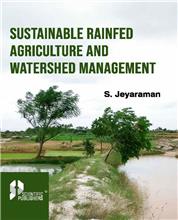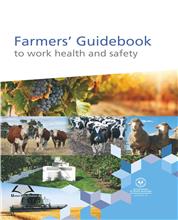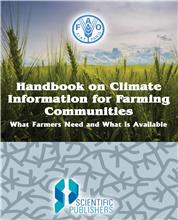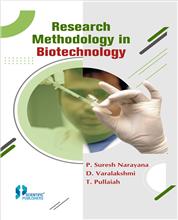Chapter 1 Biodiversity - Definitions and Concepts
1.1 Definitions
1.2 Levels of biodiversity
1.2.1. Species diversity
1.2.2. Genetic diversity
1.2.3. Ecological diversity
Chapter 2 Accumulation of Biodiversity
2.1 Evolution of life
2.2 Speciation vs Extinctions
2.2.1. Speciation
2.2.2. Extinctions
2.3 Present state of global biodiversity
Chapter 3 Distribution of Biodiversity
3.1 Factors affecting global distribution of biodiversity
3.2 Patterns of global distribution of biodiversity
3.3 Reasons for variation in the distribution of biodiversity
3.4 Endemism
3.4.1. Definition
3.4.2. Types of endemism
3.4.3. Reasons for endemism
3.4.4. Causes for loss of endemism
3.5 Biodiversity hotspots
3.5.1. Definition
3.5.2. Criteria for determining hotspots
3.5.3. Number of hotspots
3.5.4. Hottest hotspots
3.5.5. Distribution of hotspots
3.5.6. Hotspots - biodiversity conservation
Chapter 4 Value and Benefits of Biodiversity
4.1 Value assessments of biodiversity
4.1.1. Use value
4.1.2. Non-use value
4.2 Economic valuation of biodiversity
4.2.1. Direct valuation approaches
4.2.2. Revealed preference approaches
4.2.3. Stated preference approaches
4.3 Benefits of biodiversity
4.3.1. Provisioning services
4.3.2. Regulating services
4.3.3. Cultural services
4.3.4. Supporting services
Chapter 5 Threats and Loss of Biodiversity
5.1 Dimensions of biodiversity loss
5.1.1. Loss of genetic diversity
5.1.2. Loss of species diversity
5.1.3. Loss of ecological diversity
5.2 Magnitude of biodiversity loss
5.2.1. Species- area estimates
5.2.2. Estimations from empirical data
5.2.3. Estimations from Red List of threatened species
5.2.4. Estimating co-extinctions
5.2.5. Models of impact of climate change
5.3 Trends in loss of biodiversity
5.4 Threats to biodiversity
5.4.1. Root causes of threats to biodiversity
5.4.2. Direct threats to biodiversity
Chapter 6 Biodiversity Monitoring, Assessment and Inventory
6.1 Monitoring of biodiversity
6.1.1. The concept of monitoring
6.1.2. Characteristics of a good indicator
6.1.3. Use of indicators
6.1.4. Biodiversity indicator partnership
6.1.5. Biodiversity indicators
6.2 Assessment of biodiversity
6.2.1. Genetic diversity
6.2.2. Population diversity
6.2.3. Species diversity
6.2.4. Ecosystem diversity
6.3 Inventorying of biodiversity
6.3.1. Single taxon inventories
6.3.2. Multitaxon inventories
Chapter 7 Biodiversity - Conservation
7.1 Principles of conservation
7.2 Conservation methods
7.2.1. In situ conservation
7.2.2. Ex situ conservation
7.3 Conservation products
Chapter 8 Biodiversity - International Organizations
8.1 United Nations Environment Programme
8.2 Convention on Biological Diversity
8.2.1. Conference of Parties
8.2.2. Subsidiary body on scientific, technical and technological advice
8.2.3. The Secretariat
8.2.4. Convention protocols
8.2.5. Working group on review of implementation of the convention
8.2.6. Working group on Article 8(j)
8.2.7. AdHoc working group on protected areas
8.2.8. Global biodiversity outlook
8.2.9. Clearing house mechanism
8.2.10. National focal point
8.2.11. National biodiversity strategy
8.2.12. Strategic plan for 2011-2020 including Aichi biodiversity targets
8.3 International Union for Conservation of Nature
8.3.1. IUCN council
8.3.2. Expert commissions
8.3.3. IUCN programme
8.3.4. IUCN solutions
8.3.5. IUCN Red List
8.3.6. IUCN Red List categories of species
8.3.7. Criteria to differentiate threatened taxa
8.3.8. Number of threatened species
8.3.9. Merits and demerits of IUCN Red List
8.4 World Wildlife Fund
8.5 Other international organizations
Chapter 9 Biodiversity - Indian Scenario
9.1 Biogeographical regions
9.2 Forest biodiversity
9.3 Biodiversity hotspots
9.4 Status of biodiversity
9.4.1. Faunal diversity
9.4.2. Floral diversity
9.4.3. Marine diversity
9.4.4. Domesticated diversity
9.5 Threats to biodiversity
9.6 Loss of biodiversity
9.7 Importance and benefits of biodiversity
9.8 Inventories and assessment of biodiversity
9.9 Biodiversity conservation
9.9.1. In situ conservation
9.9.2. Ex situ conservation
9.10 Biodiversity related international agreements
9.11 National legislations, policies and plans relevant to biodiversity
9.11.1. Biological Diversity Act - 2002
9.11.2. National Biodiversity Authority
9.11.3. National Biodiversity Action Plan
9.11.4. National Biodiversity Targets
Chapter 10 Biodiversity - Traditional Knowledge
10.1 Terminology
10.2 Definitions
10.3 Characteristics of traditional knowledge
10.4 Aspects of traditional knowledge
10.5 Value and role of traditional knowledge
10.6 Threats to traditional knowledge
10.6.1. Loss of biodiversity and traditional life styles
10.6.2. Biopiracy
10.6.3. Protection of plant varieties
10.6.4. Patenting of genetically modified organisms
10.6.5. Patenting of traditional medicine
10.7 Concerns of traditional knowledge
10.8 Why to protect traditional knowledge?
10.9 Issues to be addressed
10.9.1. Involvement indigenous and local communities
10.9.2. Disclosure of origin and prior informed consent
10.9.3. Access and benefit sharing
10.10 International initiatives to protect traditional knowledge
Chapter 11 Biodiversity - Traditional Knowledge - Intellectual Property Rights
11.1 An overview of intellectual property rights
11.1.1. Industrial property
11.1.2. Artistic and literary property
11.1.3. Sui generis system
11.1.4. Criteria for patenting inventions
11.2 TRIPs and patent laws
11.2.1. India's stand vis-a-vis TRIPs agreement
11.2.2. CBD and TRIPs
11.3 Debate on extending patent laws to traditional knowledge
11.4 Systems of traditional knowledge protection
11.4.1. Positive protection
11.4.2. Defensive protection
Chapter 12 Protection of Traditional Knowledge - Indian Initiatives
12.1 Threats to traditional knowledge
12.2 Indian legislations to protect traditional knowledge
12.2.1. Protection of Plant Varieties and Farmers Rights Act, 2001
12.2.2. Biological Diversity Act, 2002
12.2.3. The Patent (Amendment) Act, 2005
12.3 Non-legislative measures to protect traditional knowledge
12.3.1. Traditional Knowledge Digital Library
12.3.2. National Innovation Foundation
References
Annexures
Annexure I : Acronyms and Abbreviations
Annexure II : Glossary
Annexure III : Summary of CBD text
Annexure IV : Nagoya Protocol
Annexure V : Aichi Biodiversity Targets
Annexure VI : Biological Diversity Act, 2002
Annexure VII : Index

























